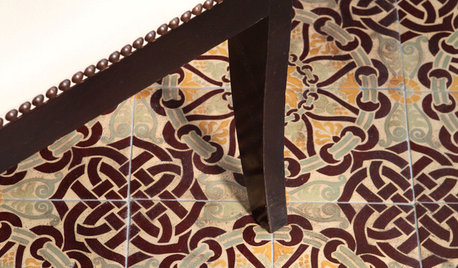service confusion...
pharkus
14 years ago
Related Stories

GREEN BUILDINGLet’s Clear Up Some Confusion About Solar Panels
Different panel types do different things. If you want solar energy for your home, get the basics here first
Full Story
DECORATING GUIDESWorking With Pros: When to Choose Full Design Services
Whether you want a single room or a whole house done, the maximum service level means the least work for you
Full Story
CURB APPEALHouzz Call: Show Us Your Mailbox!
Celebrate the U.S. Postal Service’s 240th birthday by uploading photos of your fabulous mailbox
Full Story
FURNITURESmart Shopper: How to Buy a Mattress
Confusing options, hair-raising prices, haggling ... Our guide can keep you from losing sleep over mattress shopping
Full Story
KITCHEN DESIGNHow to Design a Kitchen Island
Size, seating height, all those appliance and storage options ... here's how to clear up the kitchen island confusion
Full Story
DINING ROOMSBuffet, Sideboard, Server, Credenza: What's the Difference?
Learn the definitions and details to make shopping for dining room storage furniture less confusing
Full Story
DECORATING GUIDESWorking With Pros: When a Design Plan Is Right for You
Don’t want full service but could use some direction on room layout, furnishings and colors? Look to a designer for a plan
Full Story
BUDGETING YOUR PROJECTConstruction Contracts: What to Know About Estimates vs. Bids
Understanding how contractors bill for services can help you keep costs down and your project on track
Full Story
DECORATING GUIDESCalifornia Law: License to Practice Interior Design?
A proposed bill that would require a license to practice interior design in California has Houzzers talking. Where do you stand?
Full Story
REMODELING GUIDESOld is New: Cement Tile Makes a Comeback
Get Ideas for Using Colorful Moorish-Inspired Tile at Home
Full StorySponsored
Professional Remodelers in Franklin County Specializing Kitchen & Bath
More Discussions










brickeyee
pharkusOriginal Author
Related Professionals
Everett General Contractors · Fargo General Contractors · Goldenrod General Contractors · Merrimack General Contractors · Mount Prospect General Contractors · Newburgh General Contractors · Newington General Contractors · Panama City Beach General Contractors · Solon General Contractors · Villa Park General Contractors · Wheeling General Contractors · Elizabeth Solar Energy Systems · Tarpon Springs Solar Energy Systems · Framingham Center Home Automation & Home Media · Olathe Home Automation & Home Mediabrickeyee
pharkusOriginal Author
petey_racer
brickeyee
pharkusOriginal Author
pharkusOriginal Author
petey_racer
brickeyee
fixizin
brickeyee
bus_driver